ZEOLO
Laboratorio di Sintesi Finale
Politecnico di Milano
The initial research stage of the project was carried out together with:
Luca Carvelli
Davide Franci
The development of the product has been conducted individually.
2019
Zeolo is an energy saving fan heater for medium-long usage in domestic environments.
Its technology can be defined “hybrid” since it combines two different systems for the generation of heat: a traditional one based on the flow of electricity through resistors and one based on the released of heat of zeolite shperes.
As it will be shown later the energy saving technology starts after some minutes of activity of the first one, the resistors are infact functional for the triggering of the zeolite’s heat release.
This combination of technologies enables the device to continue its function with the resistors turned off, so with a very low energy consumption.
Zeolites are a family of minerals, extracted or synthesized, that have an important property of microporosity, thanks to which they have an incredibly large surface area in relation to the volume they occupy.
The word ‘zeolite’ comes from the Greek zeo (boil) and lithos (stone) and indicates one of the properties related to the microporosity of the structure. When the mineral comes into contact with water, either in liquid or vapour form, it triggers a process of adsorption of the molecules with a high release of thermal energy. Not all zeolites are efficient at producing heat, and a type called Faujasite (Na-Y) has been identified for Zeol, allowing heat production of up to 150°C for about 30 minutes and requiring similar times for regeneration. Regeneration consists of removing water molecules from the pores so that the adsorption process can be repeated.
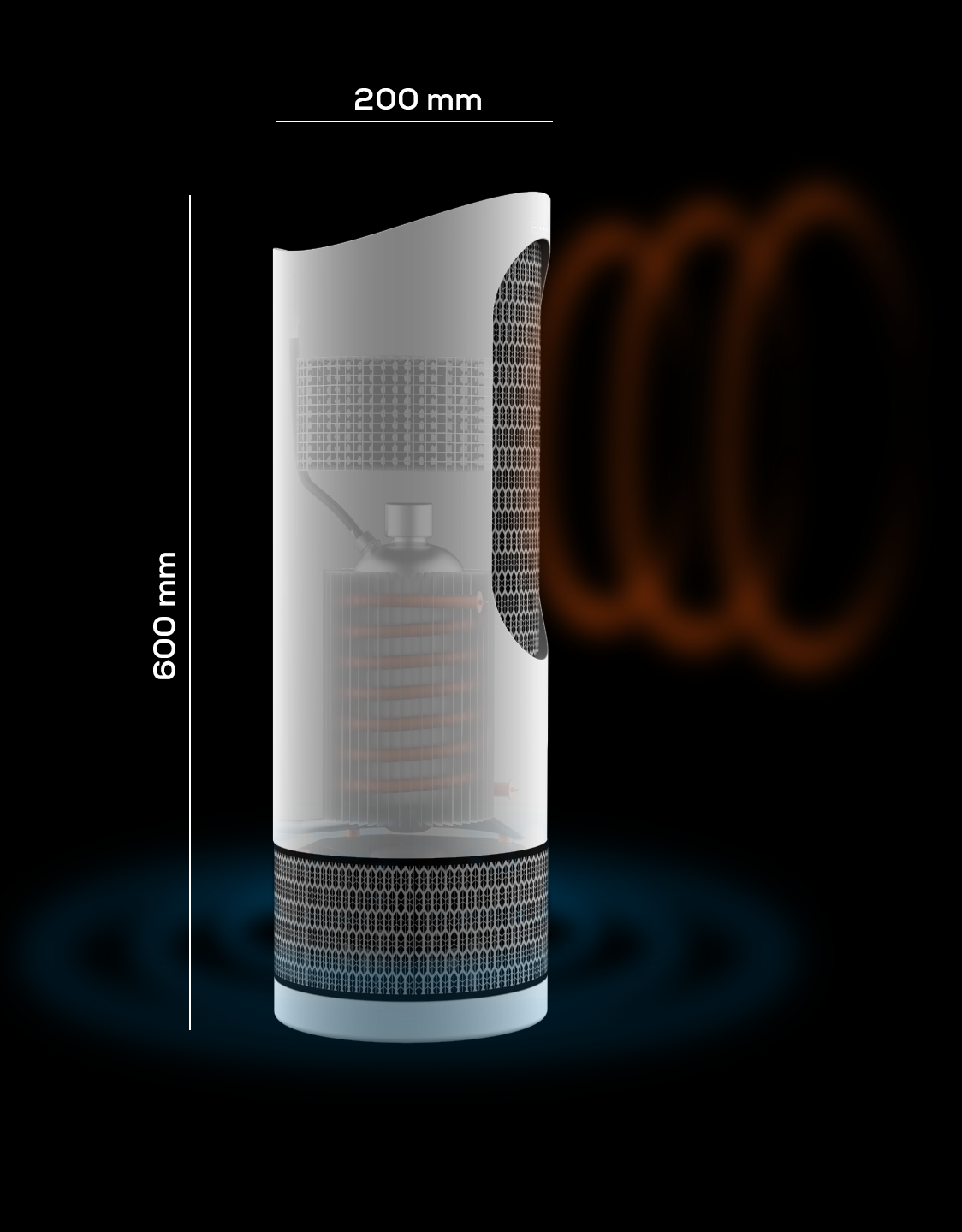
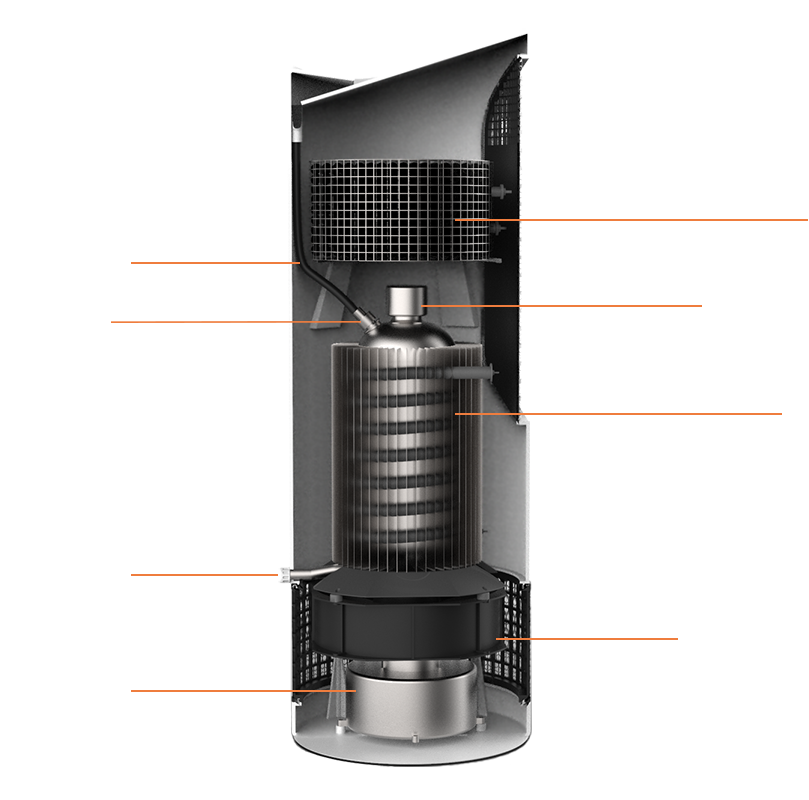
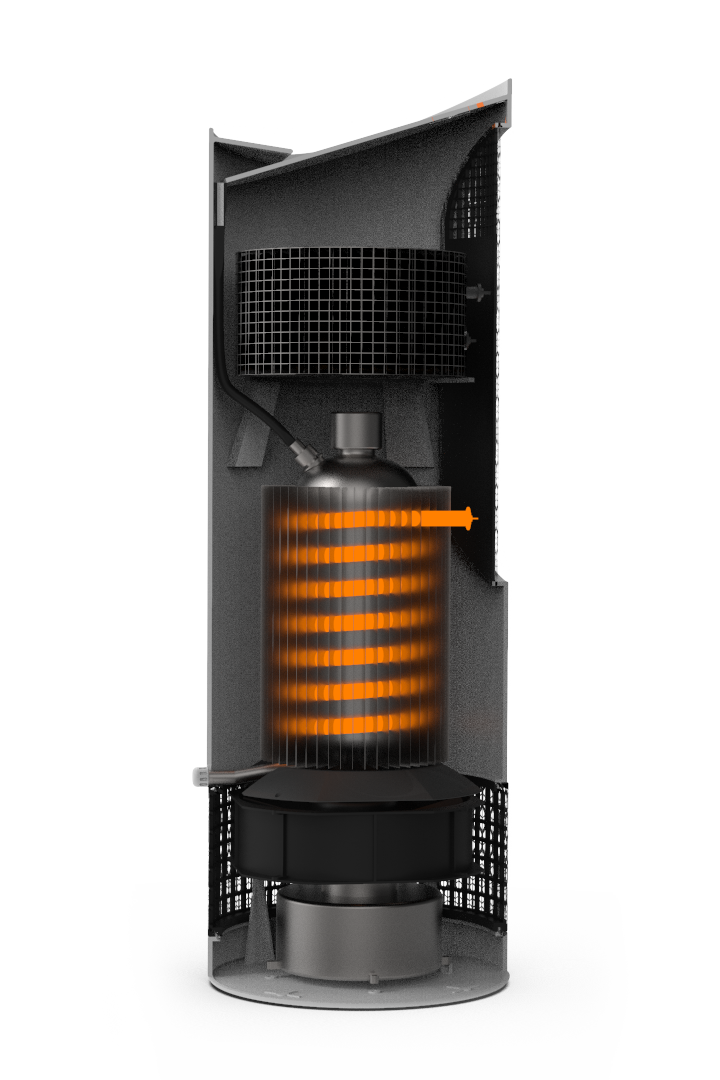
When the device is switched on, the air is heated by the primary heating element, which, in addition to heating the air, also heats the boiler, bringing the water it contains to the boil and creating steam inside it.
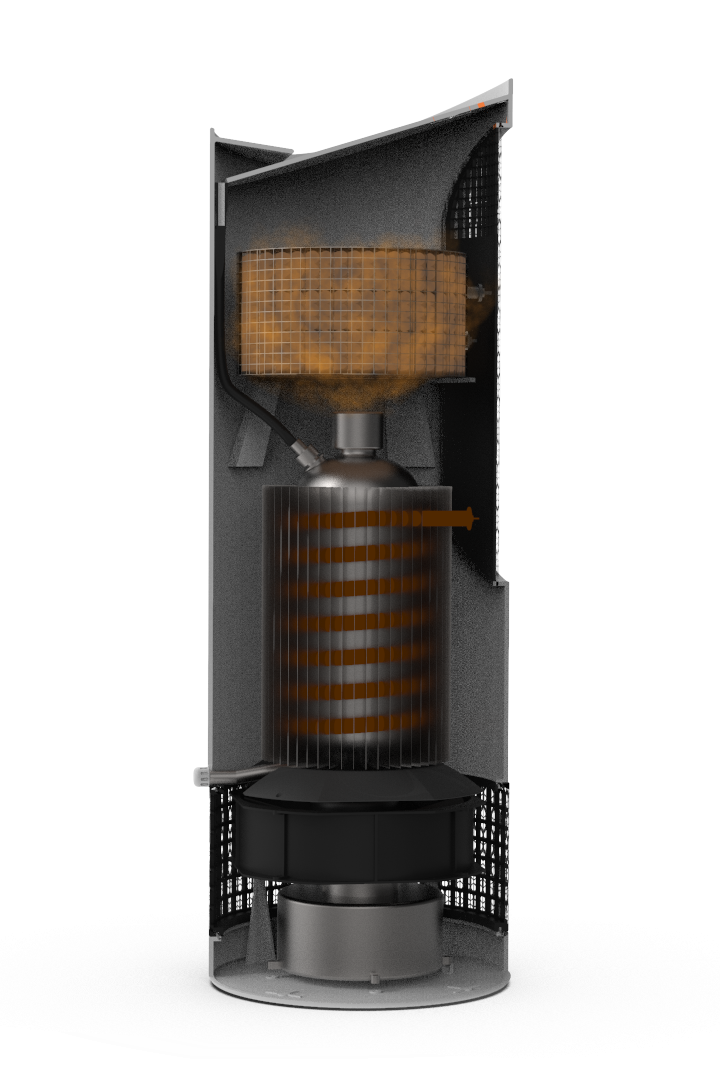
When sufficient pressure is reached, the valve starts to release steam, which permeates the zeolite. The mineral begins its adsorption reaction, releasing heat, and the primary heating element decreases in power. The energy-saving mode thus begins.
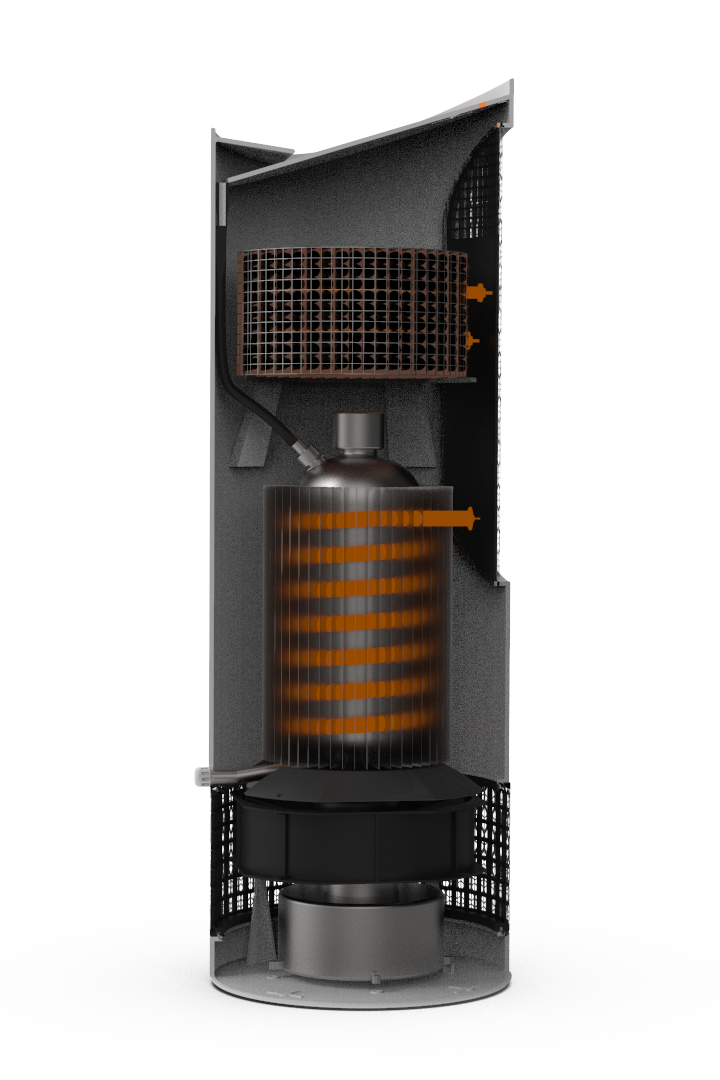
At the end of the zeolite reaction, the primary and secondary resistances come into operation at reduced power, heating the air and the mineral spheres in order to dry and regenerate them.

Once the zeolite has been regenerated, the secondary heater switches off and the primary one returns to full operation, heating both air and water. The cycle can thus be repeated.
On the top of Zeolo we find the slot into which the water necessary for the energy-saving function is poured.
Thanks to an arrange of weight sensors located under the boiler, the system detects the amount of water remaining and communicates it via the LED indicator located under the front ramp.
The indicator turns orange when it reaches the first bar and starts flashing when the boiler is completely empty, when water is poured inside the slot the bars will begin to add up, turning again white until the fifth is reached
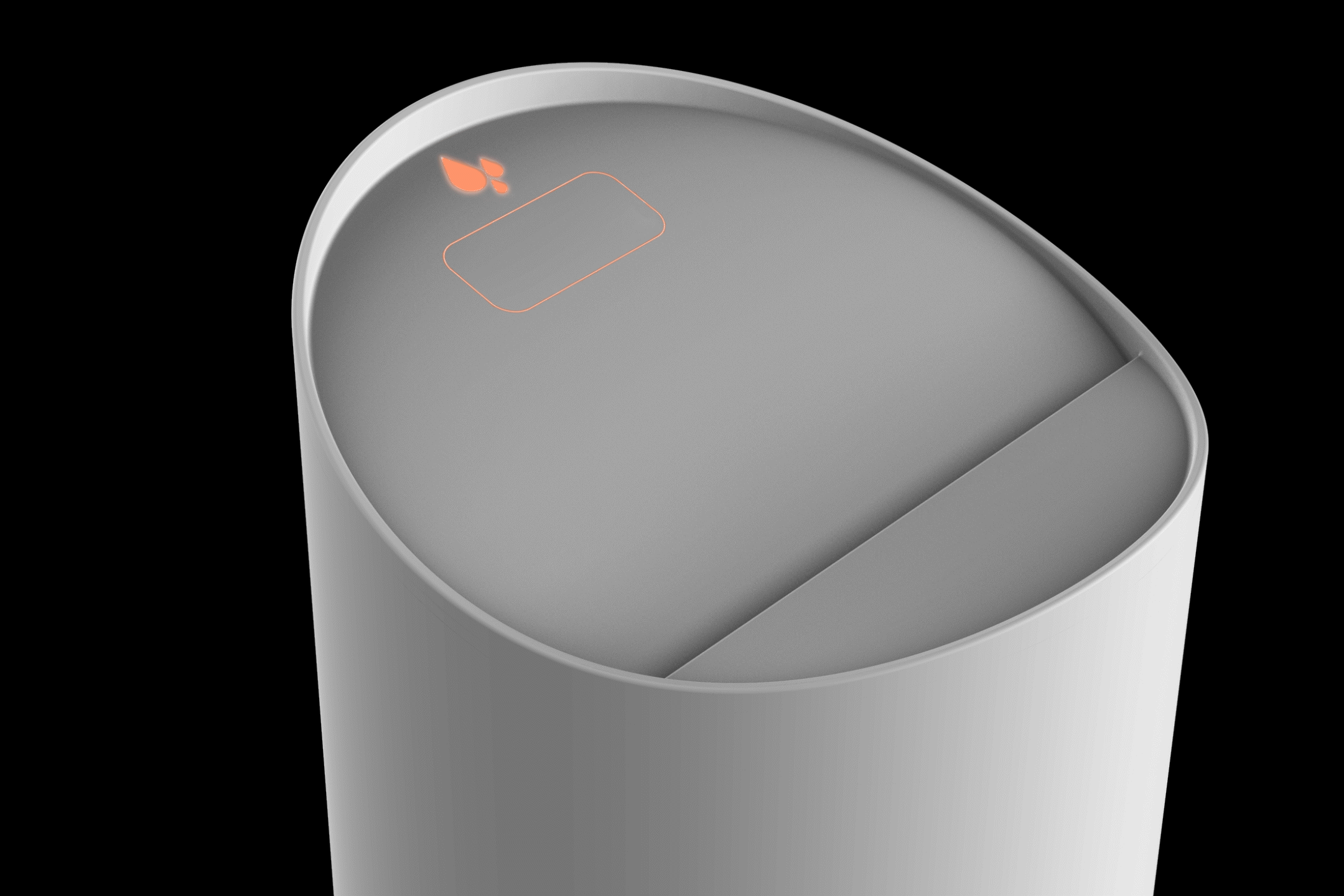
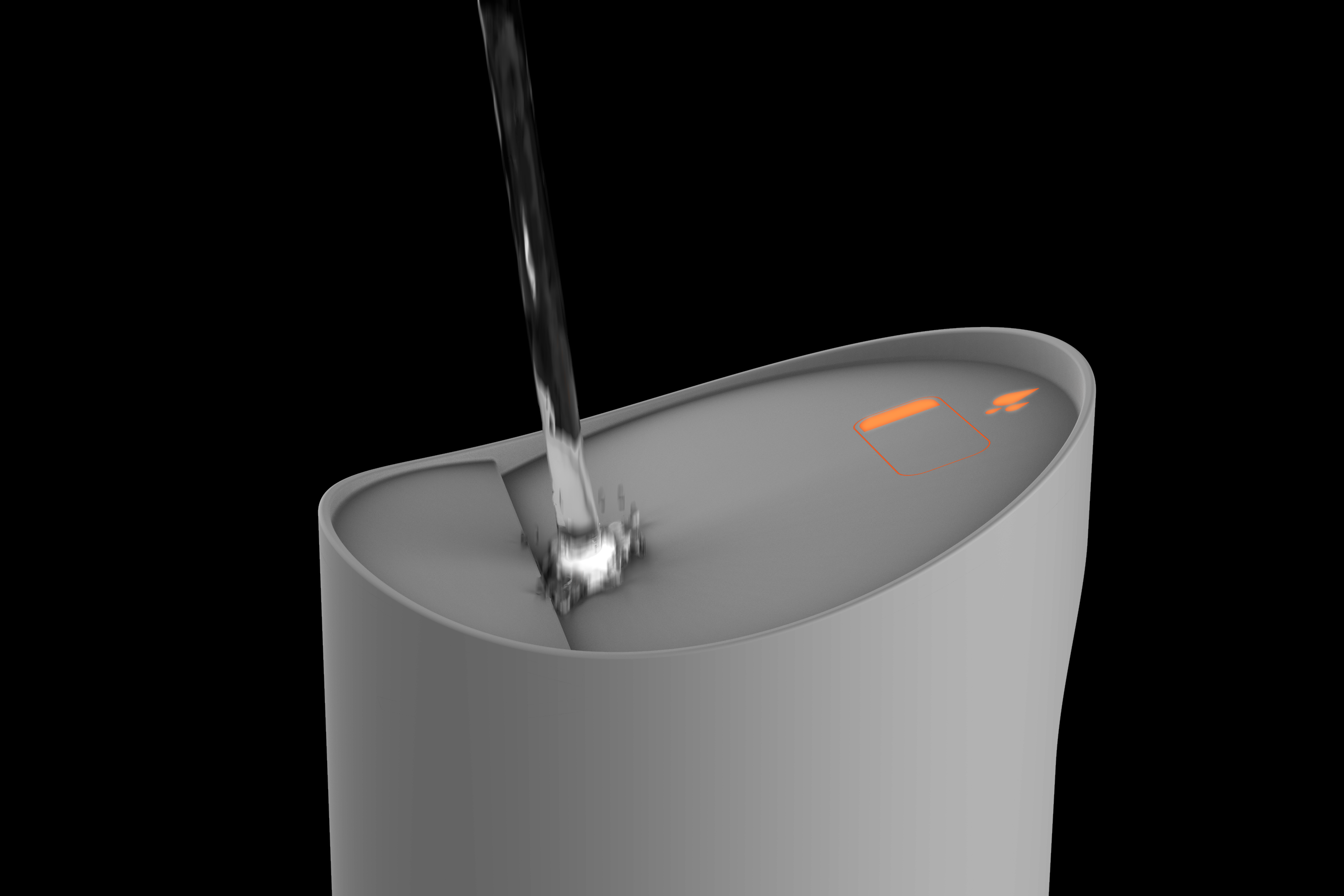
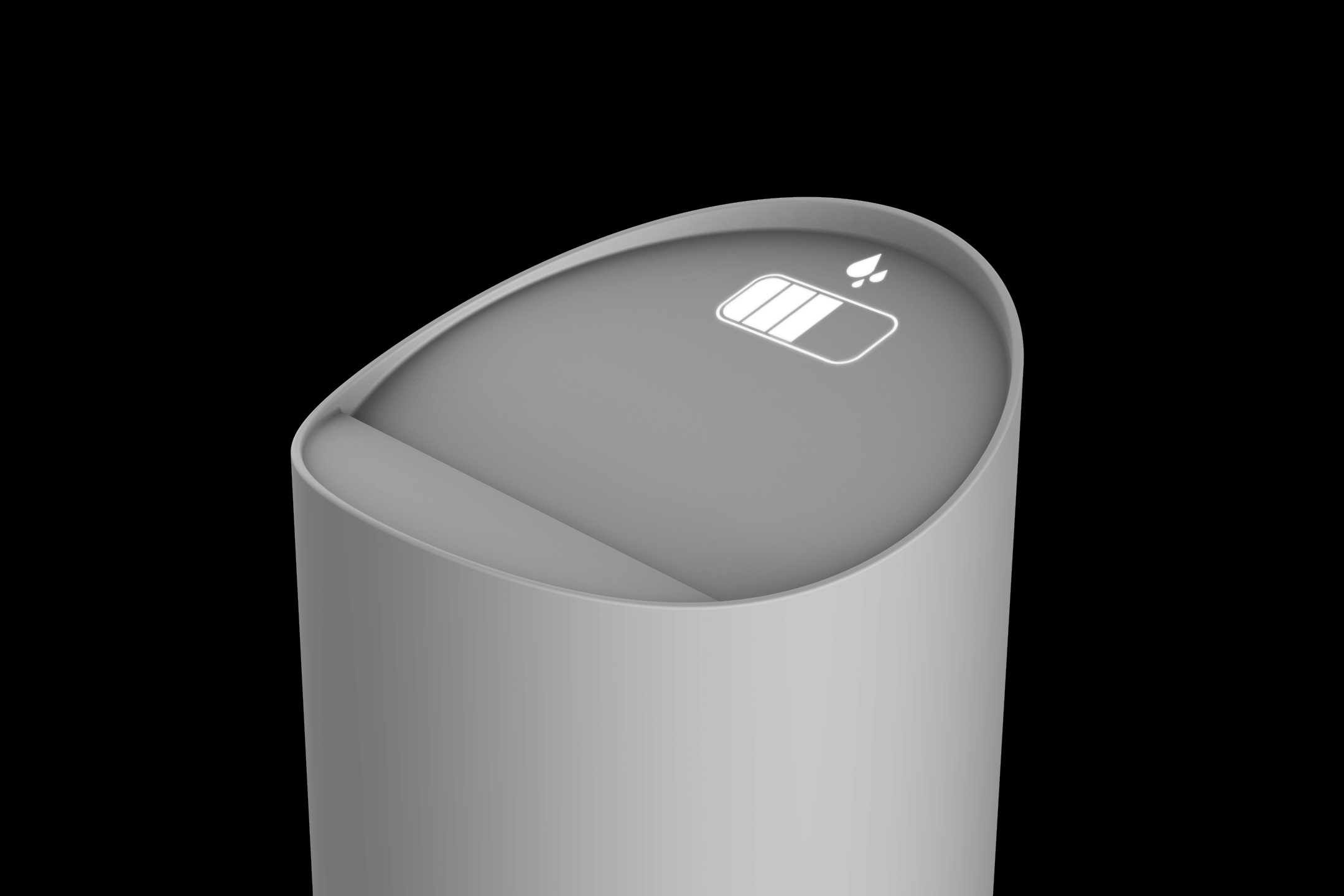
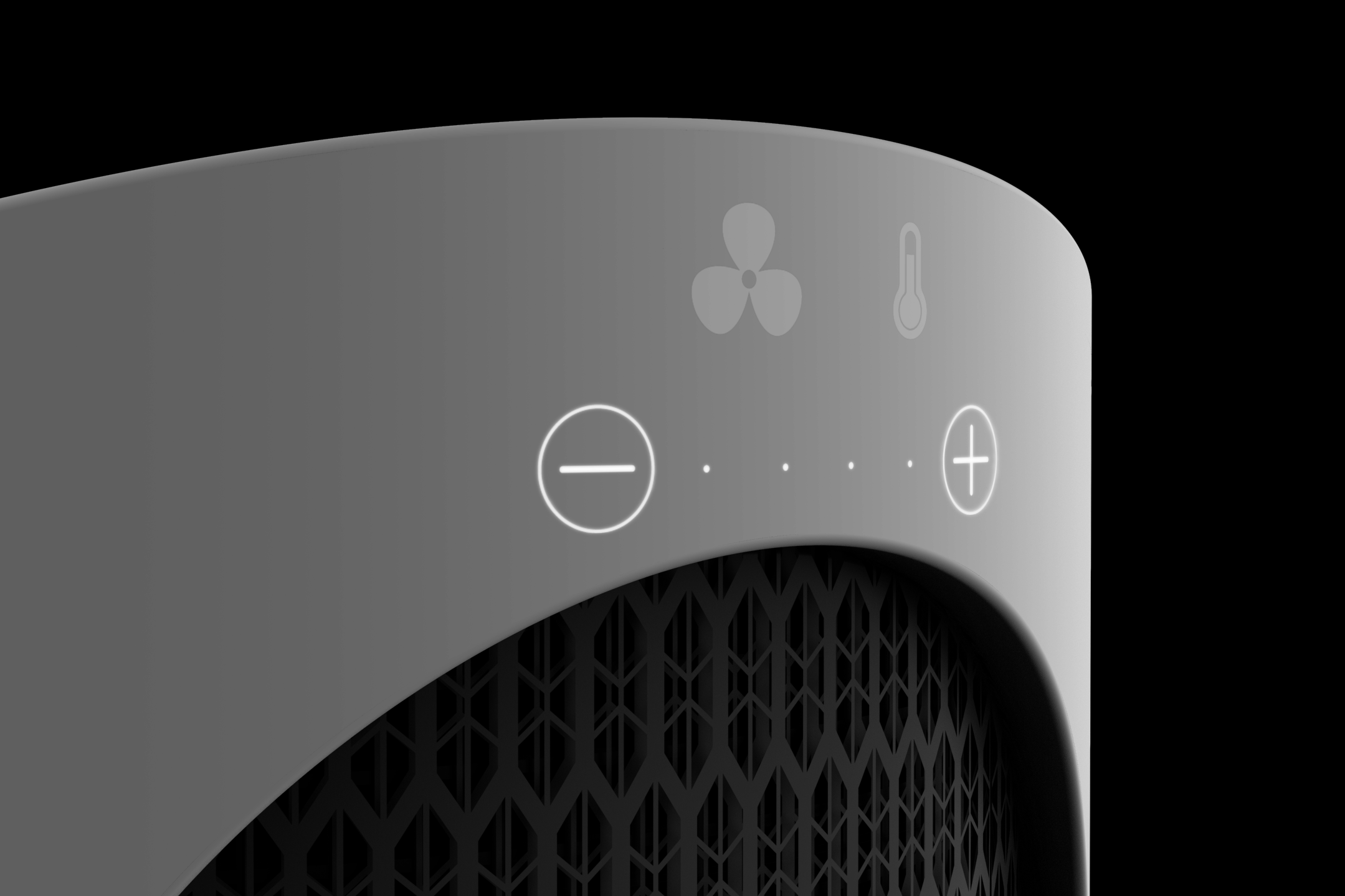
Zeolo's interface, placed on top of the air grid, is very simple and essential. It consist of two backlit capacitive touch buttons to switch from the airflow setting mode and the heat setting mode and two for increasing or decreasing the stream or heat, depending on the mode in which the user is.
The heat power can not be set if the fan is set to zero, so in order to turn the device on it's sufficient to start the fan spin.
On the opposite, to switch off the device, it is sufficient to set the air flow power to zero.


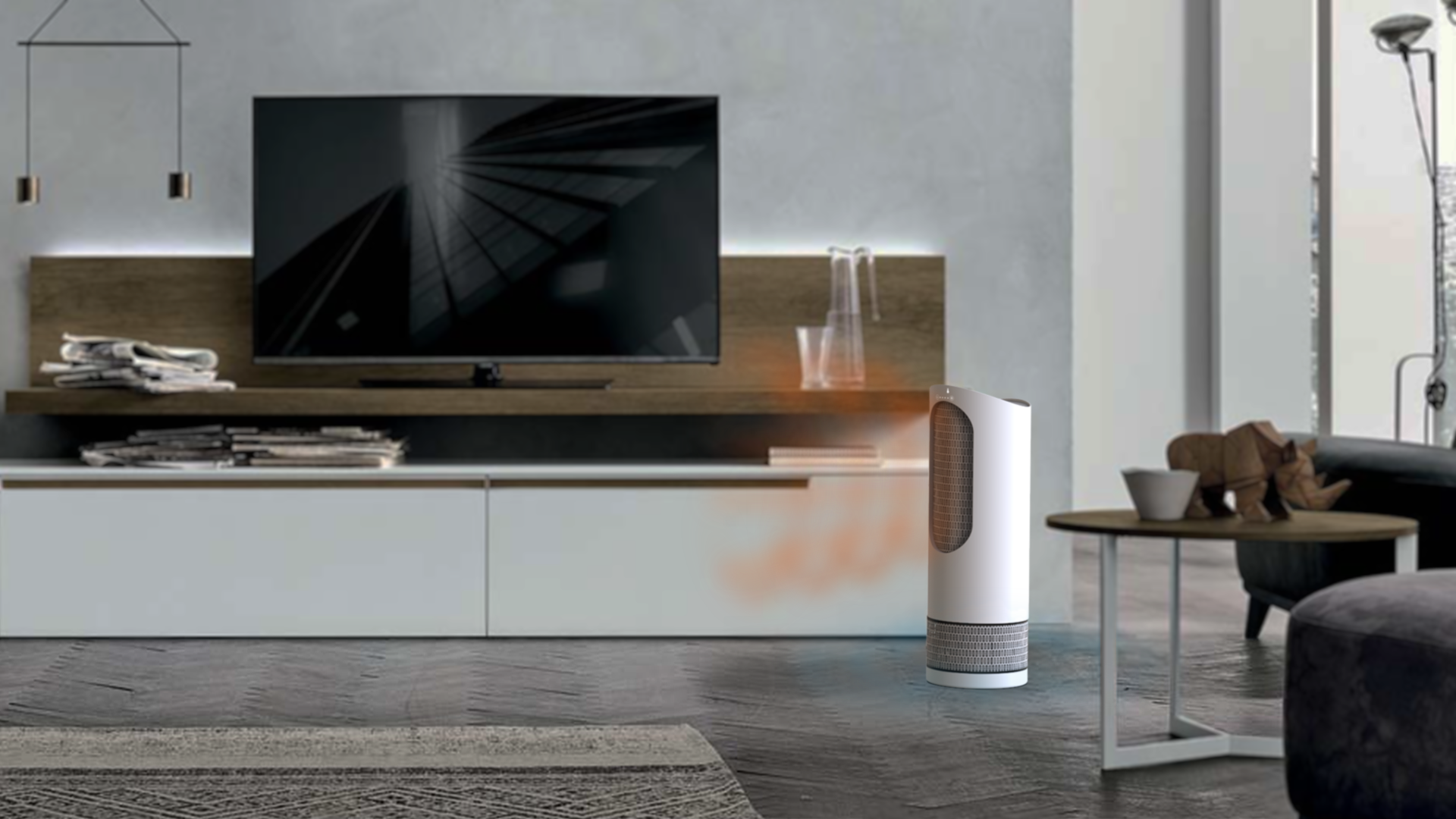
ZEOLO
Laboratorio di Sintesi Finale
Politecnico di Milano
The initial research stage of the project was carried out together with:
Luca Carvelli
Davide Franci
The development of the product has been conducted individually.
2019